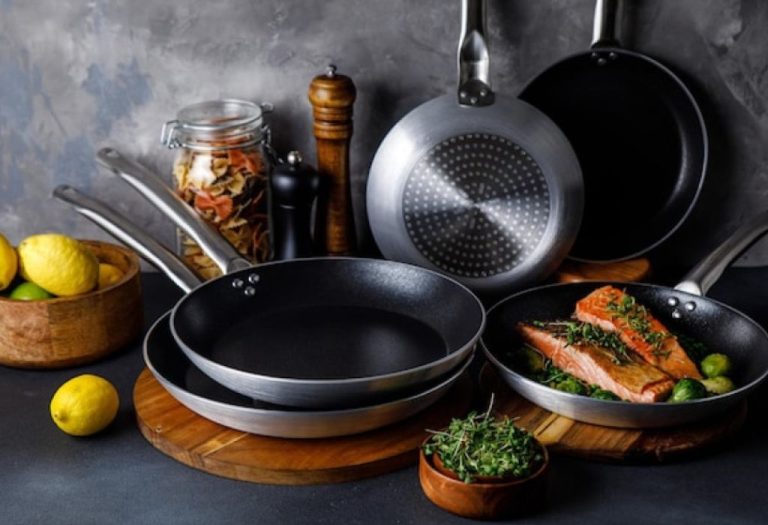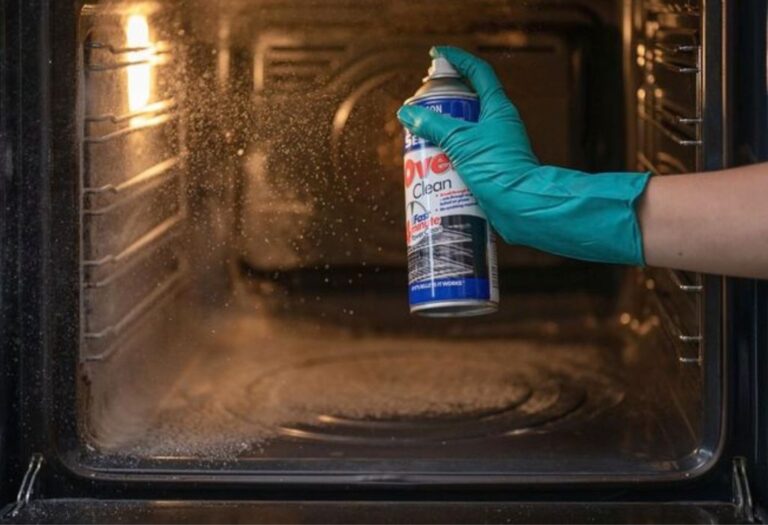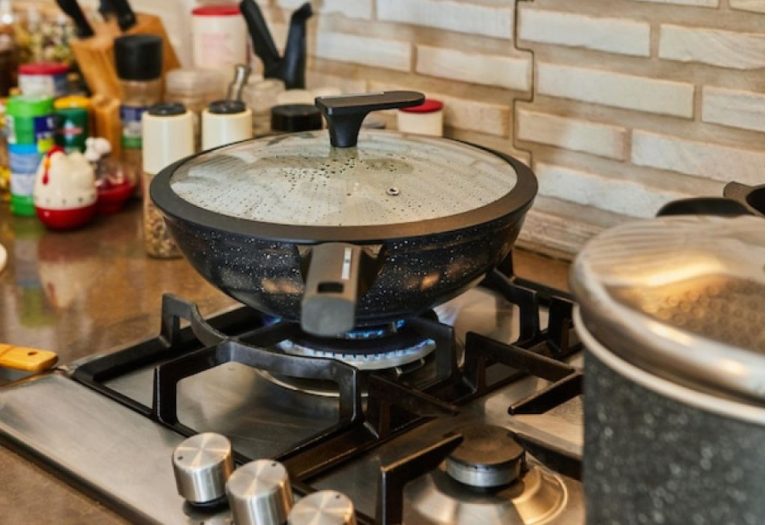A skillet that looks modern and durable can still raise hidden questions. Shoppers see “nontoxic” and “PFAS-free” labels and wonder: is hard anodized ceramic cookware safe to use every day.
The problem is that cookware safety depends on more than marketing claims. Coatings, heat tolerance, and even heavy metal testing all play a role in whether a pan stays safe in the kitchen.
Research shows that certain PFAS compounds remain authorized for use in food-contact materials 【https://www.fda.gov/food/chemical-contaminants-food/authorized-uses-pfas-food-contact-applications】. At the same time, health agencies confirm there is no known safe level of lead exposure 【https://www.cdc.gov/nceh/lead/prevention/health-effects.htm】. These facts make careful cookware choices essential.
Hard anodized aluminum paired with ceramic coatings offers clear benefits. The hardened surface resists reactivity while the ceramic layer avoids PTFE fumes and provides easy release.
Is Hard Anodized Ceramic Cookware Safe?
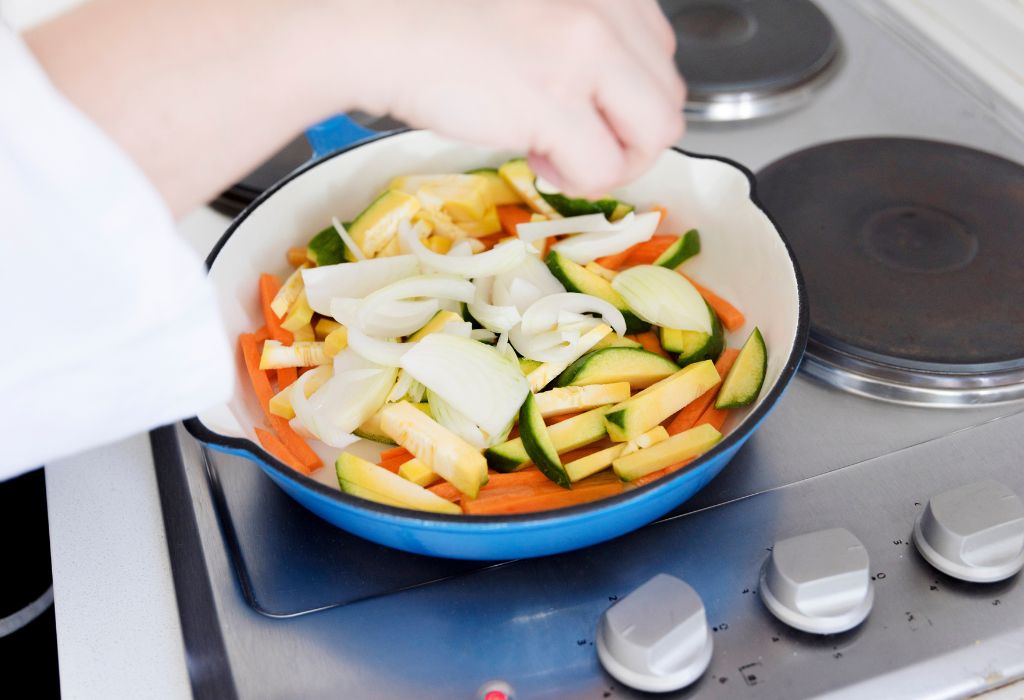
Hard anodized cookware begins with aluminum that has been electrochemically treated to create a hard, non-reactive surface. This process seals the metal, reducing the risk of aluminum leaching into food and making the base more durable.
When paired with a ceramic nonstick layer, the surface offers a PFAS-free alternative to traditional PTFE coatings. Ceramic coatings are typically derived from silica, creating a slick layer that allows food to release easily without synthetic fluoropolymers.
The combination of anodized aluminum and ceramic delivers strength, heat efficiency, and a safer cooking surface under normal use. Most modern products are tested to be free of lead and cadmium, reducing concerns linked to older or imported cookware.
Safety, however, depends on respecting heat limits and replacing pans when coatings show signs of wear. Proper care keeps the cookware performing well and helps maintain the intended non-toxic benefits.
What Hard Anodized Ceramic Actually Means
The term “hard anodized” refers to aluminum that has been treated through an electrochemical process. This hardens the surface, improves corrosion resistance, and creates a non-reactive base for cooking.
“Ceramic” in cookware typically points to a sol-gel coating derived from silica. Unlike traditional PTFE nonstick layers, ceramic is marketed as PFAS-free and often described as more environmentally friendly.
Together, these two components form a hybrid product. The anodized aluminum provides strength and even heat distribution, while the ceramic coating adds a smooth, easy-release surface for daily cooking.
Marketing claims often highlight the absence of PFOA, lead, or cadmium. However, these terms are not strictly regulated, so transparency from brands and third-party testing reports become essential for consumer trust.
The label “hard anodized ceramic” does not mean the entire pan is ceramic. Instead, it describes an aluminum base with a bonded ceramic finish designed for safer, nonstick performance.
Core Safety Factors
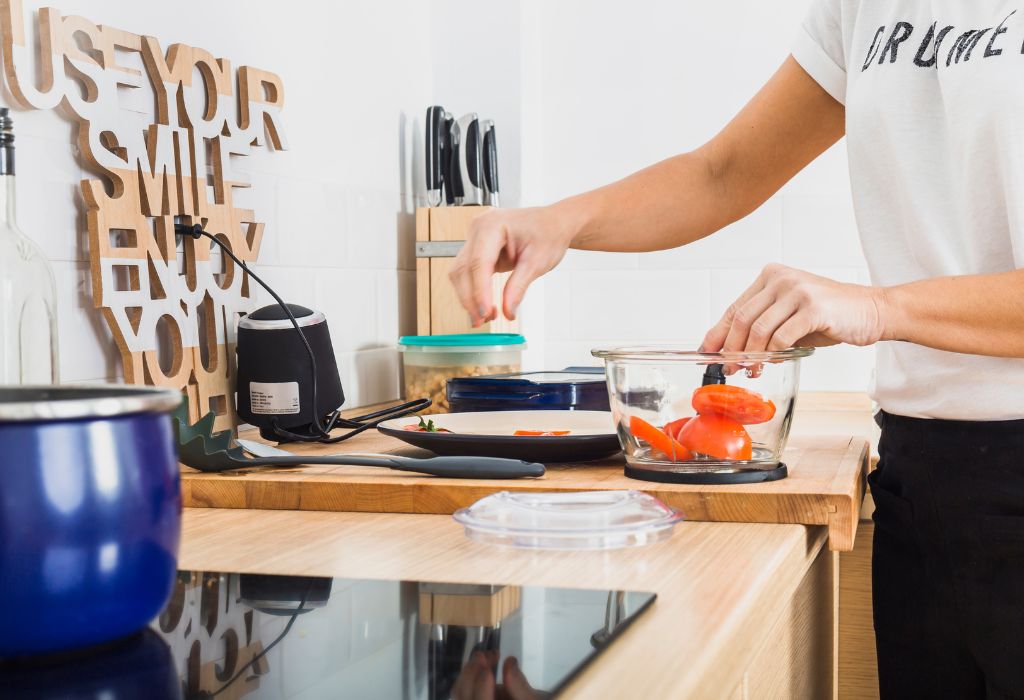
The main safety questions around cookware usually focus on chemicals, heavy metals, and durability. Hard anodized ceramic pans are no exception, and each material has its own considerations.
PFAS compounds remain authorized in certain food-contact applications, but ceramic coatings are generally marketed as PFAS-free. This distinction matters for buyers who want to avoid exposure to synthetic fluoropolymers.
Lead and cadmium are another concern, especially in imported ceramic products. Modern high-quality cookware is tested to meet strict safety limits, but unverified products can still pose risks.
Aluminum exposure has been studied for decades, with agencies noting that levels from cookware are typically low. The anodizing process strengthens the surface and reduces reactivity, making transfer into food less likely.
Heat tolerance is also critical. Ceramic coatings tend to degrade faster at very high temperatures, so staying within the manufacturer’s limits helps maintain both safety and performance.
Performance & Durability
Hard anodized aluminum gives cookware a sturdy structure that resists dents and warping. This base allows heat to spread evenly, which reduces hot spots and helps food cook consistently.
The ceramic coating provides a slick surface that makes cooking with less oil possible. It also avoids the fumes associated with traditional PTFE coatings, giving users peace of mind during daily use.
Despite these advantages, ceramic coatings generally wear faster than PTFE. Over time, the nonstick properties can fade, leading to sticking and reduced efficiency in the kitchen.
Induction compatibility depends on whether the manufacturer adds a bonded steel plate to the base. Without this feature, hard anodized ceramic pans will not work on induction cooktops.
Durability is best preserved by avoiding harsh cleaning tools, high heat, and sudden temperature changes. Proper care extends the lifespan of the coating and keeps performance closer to its original state.
Safe Use & Care
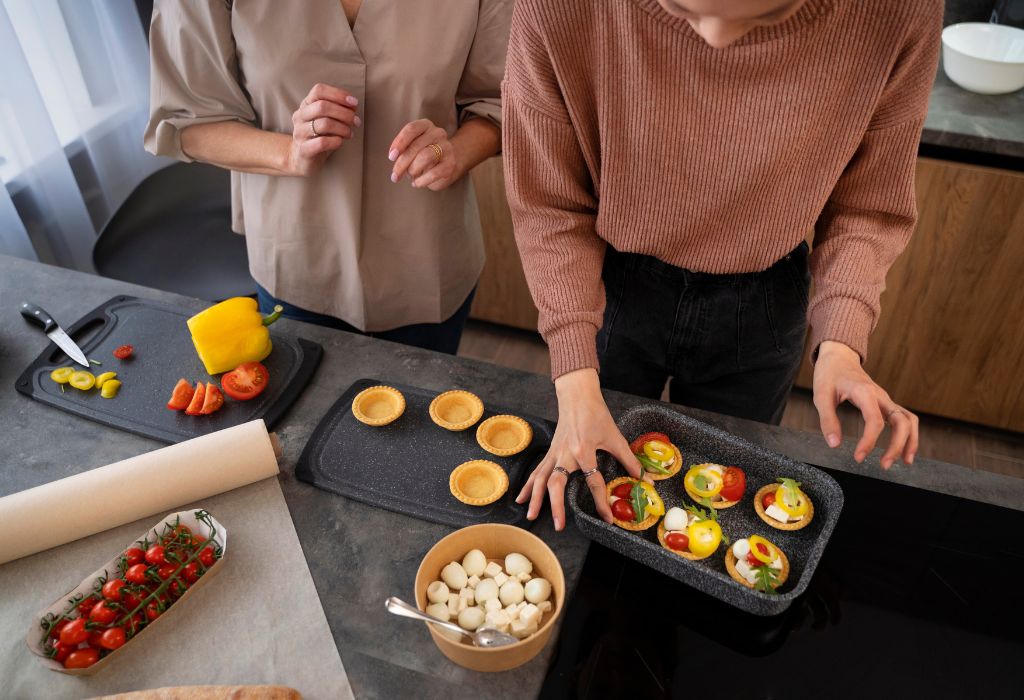
Proper cooking techniques make a big difference in preserving both safety and performance. Medium heat is usually sufficient, as extreme temperatures can cause coatings to break down more quickly.
Nonstick sprays and sharp utensils shorten the lifespan of ceramic coatings. Choosing wooden or silicone tools and using a small amount of oil or butter helps maintain the surface.
Handwashing with mild soap is recommended, even if the cookware is labeled dishwasher-safe. Harsh detergents and high heat in dishwashers accelerate wear and reduce durability.
Allowing pans to cool before rinsing prevents thermal shock, which can weaken both the coating and the base. This simple habit extends the usable life of the cookware.
Inspecting for chips, scratches, or fading surfaces ensures that cookware is replaced before it becomes unsafe. Regular checks give confidence that the pan is still delivering the benefits it was designed to provide.
Comparisons
Hard anodized ceramic cookware is often positioned as a safer alternative to traditional PTFE-based nonstick pans. It avoids fluoropolymer fumes but may not last as long under heavy use.
Stainless steel offers unmatched durability and a surface free from coatings. However, it requires more skill and oil to achieve the same nonstick effect.
Cast iron and carbon steel rely on seasoning to create a natural release layer. These materials are free of synthetic coatings but demand ongoing maintenance to stay rust-free and effective.
Pure ceramic cookware differs from ceramic-coated aluminum. It is made entirely of ceramic materials, which eliminates aluminum exposure but makes the pans more fragile and prone to chipping.
Each material has unique benefits and trade-offs. The right choice depends on whether a buyer prioritizes convenience, longevity, or complete freedom from coatings.
Buying Checklist
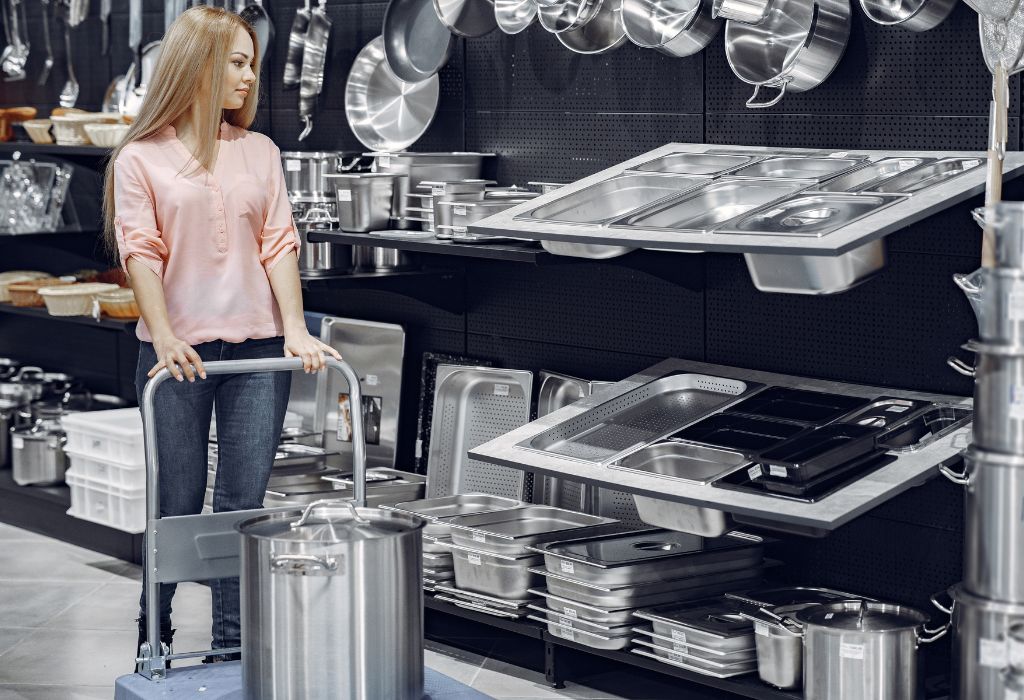
Clear labeling is one of the most important signs of safe cookware. Look for brands that specify “PFAS-free,” “lead-free,” and “cadmium-free” directly on their packaging.
Independent testing reports provide an extra layer of assurance. Manufacturers that share third-party lab results demonstrate greater transparency and credibility.
Temperature limits should always be published. Knowing whether a pan is safe up to 400°F or 500°F helps avoid damage and keeps coatings from breaking down prematurely.
Check for compatibility details such as induction readiness or oven-safe ratings. These features influence not only safety but also overall kitchen versatility.
Be cautious of vague marketing terms like “nontoxic” without supporting data. Reliable cookware brands clearly define materials and provide instructions for safe long-term use.
Conclusion
So, is hard anodized ceramic cookware safe in the kitchen. The answer is yes, when used within its limits and sourced from reputable brands.
The anodized base reduces aluminum reactivity, while the ceramic layer avoids PFAS and provides easy food release. This combination offers a balance of durability and convenience for daily cooking.
Safety depends on proper care, respecting heat guidelines, and replacing worn pans. Following these steps ensures that the cookware continues to perform as intended.
For households seeking a nonstick option without PTFE, hard anodized ceramic remains a strong contender. With mindful use and careful brand selection, it can provide both peace of mind and reliable results.
I’m Emma J. Caldwell, the founder, lead writer, and home-cooking enthusiast behind KitchenGuideCo.com. With a background in culinary arts and over a decade of cooking experience in both professional and personal kitchens, I created this platform to demystify recipes, offer smart kitchen gadget reviews, and guide readers through meal prep with confidence and clarity.


